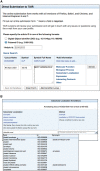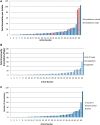Assessment of community-submitted ontology annotations from a novel database-journal partnership
- PMID: 22859749
- PMCID: PMC3410254
- DOI: 10.1093/database/bas030
Assessment of community-submitted ontology annotations from a novel database-journal partnership
Abstract
As the scientific literature grows, leading to an increasing volume of published experimental data, so does the need to access and analyze this data using computational tools. The most commonly used method to convert published experimental data on gene function into controlled vocabulary annotations relies on a professional curator, employed by a model organism database or a more general resource such as UniProt, to read published articles and compose annotation statements based on the articles' contents. A more cost-effective and scalable approach capable of capturing gene function data across the whole range of biological research organisms in computable form is urgently needed. We have analyzed a set of ontology annotations generated through collaborations between the Arabidopsis Information Resource and several plant science journals. Analysis of the submissions entered using the online submission tool shows that most community annotations were well supported and the ontology terms chosen were at an appropriate level of specificity. Of the 503 individual annotations that were submitted, 97% were approved and community submissions captured 72% of all possible annotations. This new method for capturing experimental results in a computable form provides a cost-effective way to greatly increase the available body of annotations without sacrificing annotation quality. Database URL: www.arabidopsis.org.
Figures






References
-
- Stoppel R, Meurer J. The cutting crew – ribonucleases are key players in the control of plastid gene expression. J. Exp. Bot. 2012;63:1663–1673. - PubMed
Publication types
MeSH terms
Grants and funding
LinkOut - more resources
Full Text Sources
Research Materials

